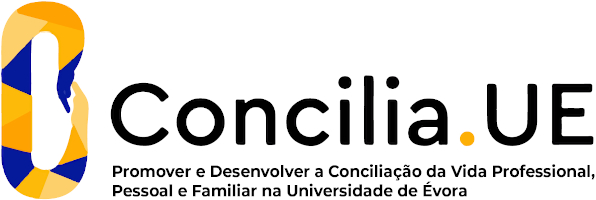2024
Geochronoloy applied to Paleontology
Name: Geochronoloy applied to Paleontology
Code: GEO10335M
6 ECTS
Duration: 15 weeks/162 hours
Scientific Area:
Geology
Teaching languages: Portuguese
Languages of tutoring support: Portuguese, English
Regime de Frequência: Presencial
Presentation
In this training the student analyzes several cases of the application of Geochronology techniques in Palaeontology studies;
Sustainable Development Goals
Learning Goals
Obtain knowledge about the potential application of geochronology in the study of Paleontology Contact with sampling techniques, processing of geological materials for the selection and s eparation of mineral and preparing mounts for studies of geochronology.
Develop descriptive studies of heavy mineral concentrates. Contact with the procedures of the isotopic analysis of minerals using mass spectrometers coupled to lasers.
Develop the ability to interpret data from geochronology with C14 in organic matter (coal, wood, peat, seeds, pollen, bones, calcareous shells, egg shells, leather, hair, tissue, paper, ceramics, paintings, resins, etc.) that can be used: in paleontology to date samples with up to 50,000 years old, in archeology may provide clues to determine the age of an artifact (objects, inscriptions and historical documents) and analyze data on geochronological vertebrate bone fragments and test paleogeographic reconstructions based on fossil content and geochronology.
Develop descriptive studies of heavy mineral concentrates. Contact with the procedures of the isotopic analysis of minerals using mass spectrometers coupled to lasers.
Develop the ability to interpret data from geochronology with C14 in organic matter (coal, wood, peat, seeds, pollen, bones, calcareous shells, egg shells, leather, hair, tissue, paper, ceramics, paintings, resins, etc.) that can be used: in paleontology to date samples with up to 50,000 years old, in archeology may provide clues to determine the age of an artifact (objects, inscriptions and historical documents) and analyze data on geochronological vertebrate bone fragments and test paleogeographic reconstructions based on fossil content and geochronology.
Contents
Characterization of the method of radiocarbon (C14), of the radiometric method using zircon U-Pb isotopic system, and of the K-Ar isotopic system with amphibole and mica.
Methods of concentration, separation and selection of samples and minerals (sampling, grinding, separation by magnetic susceptibility and density by optical observation).
Data processing and error estimate, preparation of Tera-Wasserburg diagrams and concordias using software that is suitable for organizing and presenting results.
Practical examples of studied zircon, amphiboles and micas geochronology applied to the calibration of the ages of fossiliferous or non-fossiliferous sedimentary sequences, with crucial importance: in the interpretation of stratigraphic columns and analysis of sedimentary provenance and characterization of sources, in establishing maximum age of deposition and developing models of palaeogeographic reconstruction of regional and global scale.
Methods of concentration, separation and selection of samples and minerals (sampling, grinding, separation by magnetic susceptibility and density by optical observation).
Data processing and error estimate, preparation of Tera-Wasserburg diagrams and concordias using software that is suitable for organizing and presenting results.
Practical examples of studied zircon, amphiboles and micas geochronology applied to the calibration of the ages of fossiliferous or non-fossiliferous sedimentary sequences, with crucial importance: in the interpretation of stratigraphic columns and analysis of sedimentary provenance and characterization of sources, in establishing maximum age of deposition and developing models of palaeogeographic reconstruction of regional and global scale.
Teaching Methods
Fieldwork for observation of stratigraphic sequence; Discussion of sedimentary environments, magmatism and tectonic
conditions and global history and evolution of Earth
Laboratory work in order to contact directly with the partition and grinding of rocks, separation by magnetic susceptibility /
density, with the methods of preparing thin sections and mounts of minerals in resin. Binocular microscope observation of mineral for dating. Support material will be given in digital format about the basic equipment for studies of mineralogy, petrography and geochronology (CL, LA-ICP-MS and SHRIMP); Resolution of exercises on observation and interpretation of data by the method of radiocarbon geochronology in organic matter, U-Pb and K-Ar age data on detrital minerals in sedimentary rocks.Bibliographic research. The evaluation will include: 70% of a written report (theme to choose from a list suggested by the evaluator) and 30% of performance in school activities, exercises and participation
conditions and global history and evolution of Earth
Laboratory work in order to contact directly with the partition and grinding of rocks, separation by magnetic susceptibility /
density, with the methods of preparing thin sections and mounts of minerals in resin. Binocular microscope observation of mineral for dating. Support material will be given in digital format about the basic equipment for studies of mineralogy, petrography and geochronology (CL, LA-ICP-MS and SHRIMP); Resolution of exercises on observation and interpretation of data by the method of radiocarbon geochronology in organic matter, U-Pb and K-Ar age data on detrital minerals in sedimentary rocks.Bibliographic research. The evaluation will include: 70% of a written report (theme to choose from a list suggested by the evaluator) and 30% of performance in school activities, exercises and participation
Teaching Staff
- Manuel Francisco Colaço de Castro Pereira [responsible]





















